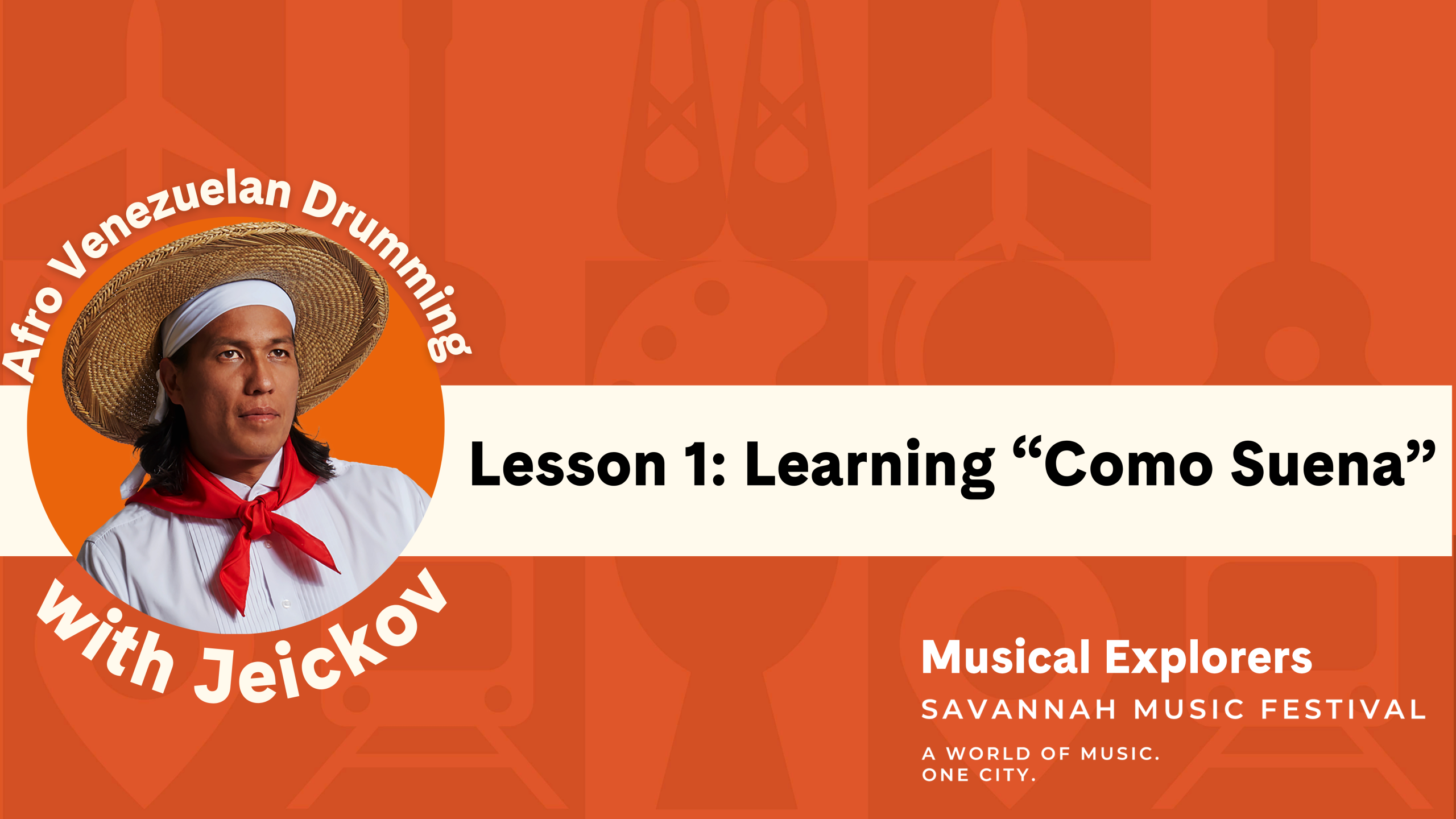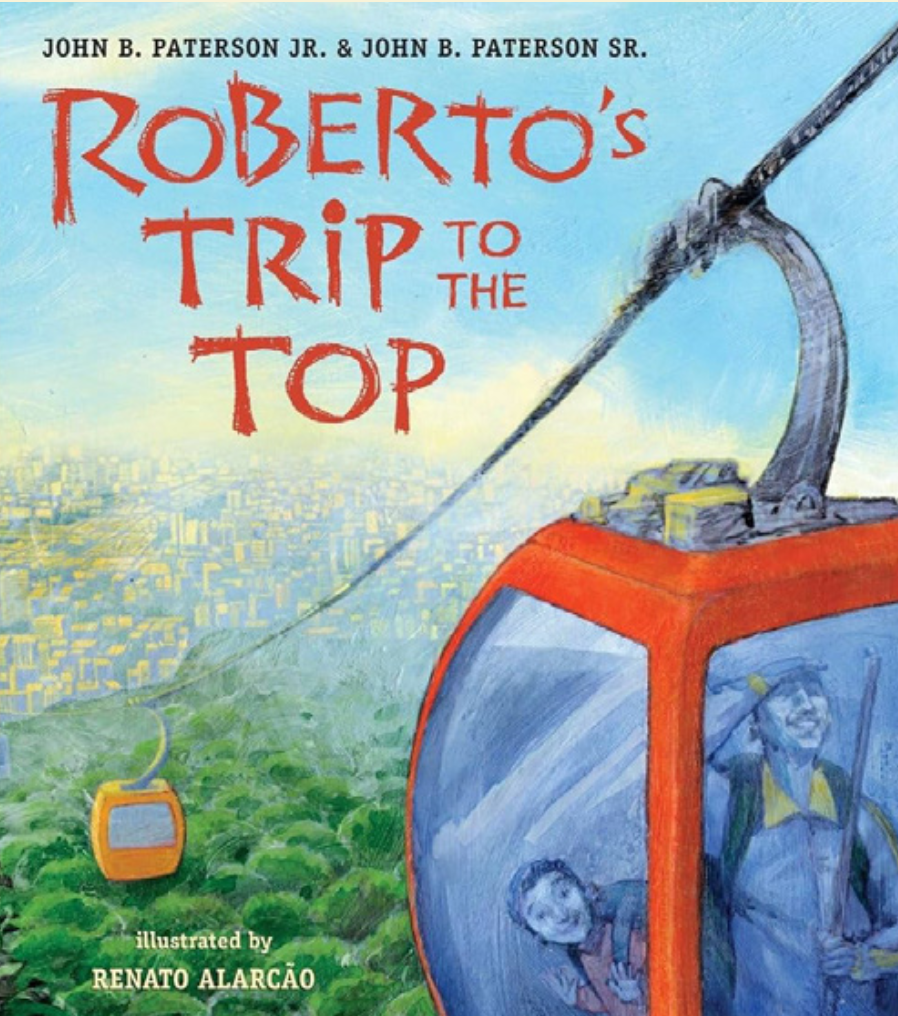Aim: What are some distinctive instruments in Afro Venezuelan music?
Summary: Students will identify instruments that are special to Afro Venezuelan music by listening, singing, and understanding the roles of instruments in “Como Suena”
Materials: Musical Explorers online resources
Standards: GA: ESGM2.PR.1, ESGM2.RE.1, ESGM2. CN.1, ESGM2.CN.2; SC: GM.PR.NL-AH.3, GM.RE.NL-AH.6, GM.RE.NL-AH.7, GM.CN.NL-AH.8, GM.CN.NL-AH.9
Vocabulary: coro, décima, guarura, maraca, palitera, tambores: cumaco, laures, clarìn
African people introduced the drum to Venezuela over 500 years ago. The mixture of African and Venezuelan cultures is reflected in Afro Venezuelan music, which features many instruments and rhythms mixed together. “Como Suena” is commonly performed for a crowd of people, with community members contributing rhythms of their own to create one powerful sound. Repeated chants throughout the song maximize everyone’s ability to take part.
Sing “Como Suena”
- Listen to “Como Suena,” Track 2.1.
Track 2.1 – “Como Suena” Song
- Ask students if they can identify which part of the song is the coro, the repeated chant.
- Practice the words to the coro using pronunciation Track 2.2.
Track 2.2 “Como Suena” Coro Pronunciation
- Learn the melody of the coro using Track 2.3.
Track 2.3 “Como Suena” Coro Melody

Lyrics: “Como Suena”
“Como Suena”
[original lyrics]
Como suena (x2)
Maria (x2)
Son los tambores (x2)
Y mi bandera de mi país Venezuela
Coro (x4):
Loloe
hay María tu eres buena
Dale a tu maraca negra y oye como suena
Lo trageron desde el congo el tambor que yo quería
Mira pa que tu lo bailes de noche y tambien de dia.
(Coro)
Siempre y cuando y tu lo bailes con el alma de verdad
El tambor de venezuela mira nunca callara.
(Coro)
Maria cuando bailes dame la oportunidad
De que suenen mis tambores de noche y de madrugada.
(Coro)
Hay lo baila martica y lo baila simon
Y yo lo estoy cantando aquí en el malecon.
(Coro)
* The remaining lyrics follow a pattern of improvised vocals and the coro.
“How It Sounds”
[translated lyrics]
How it sounds (x2)
Maria (x2)
It’s the drums (x2)
And my flag from my country, Venezuela
Coro (x4):
Loloe,
oh María, you’re so good
Play your black maraca and hear how it sounds
They brought it from the Congo, the drum that I wanted
so you can dance to it at night and in the morning
(Coro)
As long as you can dance it with soul and truth
The beat of Venezuela, look, will never be silent
(Coro)
Maria, when you dance, give me the chance to play
And drum all night till the break of day
(Coro)
Martica dances it, and so does Simón
and here I am singing right by the pier.
(Coro)
Explore Afro Venezuelan Instruments
- Explain that Afro Venezuelan music uses the sound of many instruments at the same time. Play the introduction of “Como Suena,” Track 2.1, and count the number of instruments heard as a class.
Track 2.1 – “Como Suena” Song
- Use SG 14 to reveal the instruments played in “Como Suena.”
- The tambores (drums) are tambor laures, tambor clarìn, and tambor cumaco with paliteras (thick wooden drum sticks). Use Tracks 2.4-2.6 to listen to each tambor.
- Do the drums sound the same or different? Why do you think they each have a different sound?
Track 2.4 Tambor Laures Demo
Track 2.5 Tambor Clarìn Demo
Track 2.6 Tambor Cumaco Demo
- Although it is not a tambor, the maraca is a percussion instrument that creates sound when shaken. Listen to Track 2.7 to hear the maraca.
Track 2.7 Maraca Demo
- The horn-like instrument is called a guarura, which is made from the shell of the large sea snail known as conch. Listen to Track 2.8 to hear the guarura.
Track 2.8 Guarura Demo
- It is common in Afro Venezuelan culture to use found objects as percussion. Try this with your students by using a book or a box, for example as a ‘found’ tambor. You can use kitchen spoons or sticks from outside as paliteras.
African History in Venezuela

Afro Venezuelan music is a blend of two different cultures: African (Afro) and Venezuelan. Over 500 years ago, African people were forced to migrate to Venezuela, bringing with them the African drum, officially introducing tambores to the country.
At the time, both indigenous (native) Venezuelan people and African people were forced to work for Europeans, farming cocoa leaves, catching fish, raising cattle, and mining gold for no pay in return. Over time, the African and Venezuelan peoples blended their families and were able to achieve their freedom. Today, millions of Afro Venezuelan people live in and around the pueblo of Caracas, enjoying Afro Venezuelan music, food, and ways of life.
Creative Extension: Write Your Own Décima
- A décima is a form of Latin American folk poetry that expresses hopes, dreams, joys, and worries. In Afro Venezuelan communities, décimas are performed at nighttime gatherings with music and dancing; they can be made up on the spot or passed down across generations.
- As a class or individually, use SG 15 to help students write their own dècima, which includes a 10-line stanza and a coro (repeated chant). Emphasize that décimas are for self expression and there are no wrong answers.
- What is something you hope will happen? What do you dream about doing? What makes you feel happy and why? Is there something that worries you and how can you overcome it?
- Have students recite their dècimas or the class dècima.
- Extend the activity by asking students to form a circle around the person performing the dècima. Add background music by inviting students to use body percussion or tambores, or play instrumental Track 2.9.
Track 2.9 Dècima Instrumentals
Literacy Link: Roberto’s Trip to the Top
American author, John Paterson, collaborates with Venezuelan illustrator Renato Alarcao, to depict the breathtaking vistas and bustling scenes of Caracas, Venezuela. Through bilingual prose and dialogue, Roberto’s Trip to the Top follows a boy and his uncle as they ride the local teleférico to the top of El Ávila mountain.
Musical Word Wall
Add the words coro, décima, guarura, maraca, palitera, tambores: cumaco, laures, and clarìn to the Musical Word Wall.
PDF Downloads
SG 14 – Discover Afro Venezuelan Instruments
SG 15 – Write Your Own Décima
Audio Tracks
Track 2.1 – “Como Suena” Song
Track 2.2 “Como Suena” Coro Pronunciation
Track 2.3 “Como Suena” Coro Melody
Track 2.4 Tambor Laures Demo
Track 2.5 Tambor Clarìn Demo
Track 2.6 Tambor Cumaco Demo
Track 2.7 Maraca Demo
Track 2.8 Guarura Demo
Track 2.9 Dècima Instrumentals
← Previous: Unit 2 –Afro Venezuelan with Jeickov


